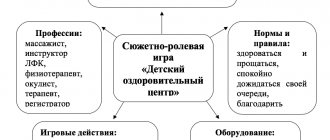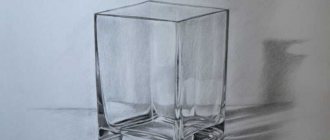Objectives of teaching drawing in different age groups
Educational:— Improve the ability to work with various visual materials, tools and artistic techniques.
— Improve the ability to obtain different shades by mixing colors.
— Strengthen the ability to work with the color wheel, determine color harmonies.
— Continue learning to harmonize colors based on diagrams and tables.
— To consolidate the ability to use the expressive capabilities of color when creating an image, reflecting not only the general properties of objects, but also one’s attitude towards it, the emotional and aesthetic state.
— Continue to learn how to subordinate various means of expression (color, shape, technique, composition) to achieve the integrity of the image.
— Continue to teach drawing techniques.
- Continue to teach how to create images of different nature (realistic, stylized, abstract) using (dots, lines, strokes, spots).
— Continue to develop compositional skills in the process of mastering patterns: texture, horizon line, balance, symmetry (asymmetry), rhythm, dynamics (statics), compositional center, perspective, chiaroscuro.
— Continue to teach drawing from life.
— Continue to introduce various types of decorative and applied arts, paintings, their motifs and elements.
— Learn to compose motifs for decorative paintings, using their elements and techniques.
- Continue to teach how to make an ornament (geometric, floral), introduce zoomorphic ornament.
- Continue to learn patterns on different shapes.
— Continue to learn how to identify simpler shapes in complex objects.
— Teach plot drawing.
Educational:
— Strengthen the ability to use a palette to obtain shades.
— Continue to develop form-building movements: drawing dots of different shapes and character; drawing straight, wavy, curved, spiral, closed and mixed lines in various combinations and compositions.
- Continue to develop a sense of color and shape; compositional skills.
— Develop: visually imaginative thinking; visual and effective thinking in the process of creating images.
— Reinforce the concepts used by the teacher at the previous age stage.
— Expand the child’s vocabulary with new special concepts: reflex, ornament, perspective: linear, aerial; depth; space; texture; structure.
- Develop memory and imagination.
Educational:
— Stimulate interest in the creative process in drawing.
— To develop aesthetic taste in the process of creating expressive images.
— Continue to cultivate accuracy when working with visual materials and tools.
— Continue to develop the ability to negotiate while creating teamwork.
— Cultivate the ability to rejoice in the achievements of others and empathize with their failures, to develop a sense of mutual assistance.
— Continue to develop the ability to perform certain actions according to the verbal instructions of the teacher.
— To develop an aesthetic attitude towards the drawing process.
To help the art teacher prepare for the lesson
Game screensavers in the lesson
All children love to play. Teachers should keep this in mind when developing the structure of their lessons. The introduction of even a small game into the lesson allows not only to diversify it and interest students in the topic being studied, but also provides an opportunity to once again summarize and consolidate new material. Some games can gradually become the main ones (children like them), and therefore they should be used in all subsequent lessons related to the same topic.
What games can be used in art lessons? Firstly, associative, developing children’s imagination and imaginative thinking. These games will be based on musical and literary works used during lessons, to which students will need to choose paintings by an artist that convey the same mood or main idea.
For example, a teacher can play an excerpt from any musical composition, and after listening to it, invite the children to find in the reproductions presented to their eyes the one with which this music is best combined, and then briefly formulate the reason for this conclusion. If the opinions of several children surveyed differ, the task can be left until the end of the lesson. At the same time, it is necessary to interest children in the question and make them think. This can be done with the help of an incentive prize, which will go to the one who correctly answers and explains the task at the end of the lesson.
The same game can be used when comparing paintings and literary works, characteristics of the images of the main characters, descriptions of nature. What is important here is not just the selection of the right work, but also the identification of its connections and those literary expressions with the help of which the author managed to create an impression similar to that depicted. After each such playful minute, the teacher, together with the children, can write down on the board the main verbal phrases that emphasize the mood of the work. Thanks to this, children will remember them, and in future work they will use them, making their own descriptions of the paintings. You should try to remember these highlighted words in the next lesson or throughout the lesson. This will help develop students' memory, especially if they are interested in completing this task.
Another variation could be a guessing game. The teacher’s task here is to come up with questions about the works of art being viewed that will require the children to solve them. You can, for example, inquire about the name of a painting unfamiliar to children. Naturally, there will be a lot of versions about this, and it is possible that children will even find its real version. During this guessing, you should ask leading questions: “What is the main goal of the work?”, “What is the compositional center of the picture?”
Generalizing tasks can also be taken in the form of riddles, such as, for example, identifying the best artists in a particular genre or reminding of the most frequently repeated images in works of art and the names of these paintings. These can be images of the same epic and fairy-tale characters in different or similar situations, the image of a woman with a child, etc. Another task is to identify works made in a similar color scheme, or to reproduce in memory portraits of famous artists and the authors who wrote them (who was written and by what artist?).
The game “Lost Piece” is also very interesting. Its essence is that the teacher shows students a piece (corner, episode) of any picture known from previous topics, and the students try to remember its name, content, and author. Naturally, children will be able to determine which piece of the picture is shown to them if, when studying this topic, they were very attentive and carefully examined and remembered the works shown to them.
This game usually captivates students so much that they ask the teacher to arrange it every day - and thus give the teacher the opportunity not only to test the strength of their knowledge and attentiveness, but also to increase their own attentiveness to the paintings shown. Gradually, students will be able to more and more quickly determine the title and author of the work, and therefore they will have to complicate the task: show less remarkable elements of the picture or show a completely unknown picture, asking them to determine its author, relying on knowledge of the artists’ writing style and their preferred themes. In addition, you can give verbal descriptions of the picture, from which students will also have to identify the hidden work.
As a rule, children love to imitate someone. This feature can also be used in a game, for example, by inviting schoolchildren to reproduce the scene depicted in the picture, come up with a continuation of it, or describe the feelings of the depicted person at the moment after his “awakening”. What does he see, hear, what does he think about? A lot of opportunities in this regard are provided by paintings of everyday content or with images of people: “Again deuce”, “Fight of Ilya Muromets with the Snake”, etc.
During the lesson it is worth holding competition games. This allows children to be captivated and once again provides an opportunity to consolidate the material they have covered. In the form of a competition, you can play the game “I am a tour guide.” A number of reproductions, united by one theme, are displayed in front of the class, and then all students take turns playing the role of a tour guide and offer the audience their story about the exhibited works. At the end of the game, a winner is chosen by vote. And when children already have the basic skills of composing a story based on a picture, reproductions of artists can be replaced with the work of the students themselves. This will provide an opportunity to hear about the impressions of the whole class about each of the presented works, i.e., find out their opinion on this matter.
The game “I’m making it up” can be a similar competition to this. It is carried out as follows: the teacher asks the students any topic, gives them time to think (you can play music with the necessary mood at this moment), and then the students talk about the fictitious picture that they painted in their imagination. At the end of the game, the stories can also be evaluated. Naturally, only the child who knows how to convey his fantasies in a literary and coherent way will win. This game is good to use when it is necessary to develop children's imagination and the ability to compose a consistent story.
Children are also very attracted to games that are similar to those they come up with themselves. These include, for example, the game “Fair”. It can be done as follows: arrange a large exhibition in the classroom. Moreover, each stand should be dedicated to the work of one of the schoolchildren. Then, together with the class, write an announcement that throughout the day there will be a fair in the drawing room, where you can “buy” any drawing, and just for a few kind words about the work itself.
When students from other classes come into the classroom during breaks, the teacher must explain that the authors will “sell” their works to those who can correctly describe the work they like, determine its main idea and come up with a story based on it. In addition, the author is given the right to ask the “buyer” additional questions at his own discretion. With the help of this game, an art teacher will be able not only to attract students from other classes to his lessons, but will also demonstrate the need for children to apply the acquired knowledge in practice.
If all kinds of games and competitions are held at school constantly, then you can prepare special medals for the best students and winners: “Master of still life”, “Specialist in the field of pictorial writing”, etc. At the end of the year, a school-wide result can be summed up, where according to the collected medals and the best artist of the school will be determined and then awarded.
Summary of drawing lesson “The Magical World of Colors”
Lesson notes
on drawing “The Magic World of Colors”.
Second junior group.
Purpose: to introduce children to paints and brushes; learn to identify the color of paint, hold a brush correctly, put paint on a brush, rinse the brush in water, wipe the brush with a napkin; develop the desire to paint with a brush, admire the beauty of various objects.
Equipment: flannelgraph, figures for flannelgraph (Pencil and Brush); easel, pieces of paper, box of paints (watercolor, gouache); brushes, cups of water, napkins.
Preliminary preparation: a tour of the group, during which the teacher draws the children’s attention to the colorfulness of the objects around them.
Progress of the lesson.
Educator: Look, children, who came to visit us today
(The teacher attaches a Pencil figurine to the flannelgraph).
Yes, this is our friend Pencil, with whom we have already drawn many drawings. But he did not come alone. Pencil, introduce us to your friend.
Pencil: This is my friend brush. (The teacher attaches a figurine of Brush to the flannelgraph.) But she didn’t come alone, but with her best friends. Brush, introduce us to them.
Brush: Try to guess for yourself:
Multi-colored sisters,
Written beauties,
They are in the box,
They want to draw quickly.
(If the children cannot guess, the teacher shows a box of paints)
Brush: Yes, these are my friends - paints. Together we decorate all objects and toys. Here in your group, I see, it’s beautiful. Let's see which one
my friends tried hard here.
(The teacher shows the children one of the paints, the children must name an object of the same color located in the group. A variant of this task: put toys of different colors on the table: balls, cubes, cars. Children must also identify the color of the paint with the color of the toy.)
Phys. Just a minute.
All the guys stood up together - straighten up
And they walked on the spot. - walking in place
Stretch on your toes - raise your arms up
And now they’ve bent over backwards. - bend over, put your hands behind your head
Like springs we sat down - sit down
And they sat down quietly at once. - straighten up and sit down.
Educator: Yes, Brush, each of your friends tried to make our group beautiful. Thank you, Brush. Will you teach our children to draw so beautifully?
Brush: Of course. Let's start by learning how to properly pick up a brush.
(The teacher demonstrates how to hold a brush correctly and invites the children to pick up the brushes).
Brush: Now don’t forget to put the brush in a glass of water and only then put paint on the brush.
Tell me the paint color,
(children name the color of the paint)
Dip your tail in paint
Careful, don't rush.
Look, here I am,
Well done my friends.
(The teacher makes sure that the children correctly hold the brush just above the metal part)
Now you can try to draw something.
(The teacher draws a straight line on the easel, saying: “This is the kind of tape I got,” and invites the children to do the same on their pieces of paper).
Brush: You guys are doing so well! Now, if you want to be friends with me, rinse your brushes in water and dry them with a napkin. Then we won’t get spoiled and together with you we will draw a lot of beautiful and interesting things.
Summary of the lesson.
Educator: Thank you and your friends - paints, Brush. Come visit us more often. Our children really want to learn to draw. Really, guys?
How many colors are there in the world1
So much beauty!
Let's learn to draw
Me, and you, and us.
Unconventional drawing techniques. Finger painting. Journey to the Land of Imagination.
Finger painting
Hand drawing is one of the most ancient painting techniques! It develops creativity at any age.
Finger painting helps to release pent-up creative energy and express your “I.”
A lot of good research has now been written about the benefits of such activities and their impact on the development of a child’s personality. The emotional and bodily (physical) development of children is accelerated, the consequences of birth stress and illness are eliminated, fine motor skills of both hands develop perfectly, speech development accelerates and becomes more complex, work and volitional qualities are cultivated, a sense of beauty and self-esteem is cultivated, ways of conveying the beauty of the surrounding world are learned and much more. Psychologists all over the world recognize the calming effect of hand drawing.
“Finger painting” is “a way of conveying emotions, feelings and states that come from the depths of a person’s heart through direct contact of the fingertips with paints and paper.” And what is most valuable is that spontaneous painting does not require the ability to draw; there is only a non-judgmental perception of what is drawn (“the heart is at the tips of the fingers”).
The classes are so exciting that children and adults themselves do not notice how they are involved in the therapy process. There is a process of transformation of negative thoughts and emotions into creative feelings. These feelings are reflected in the painting. The therapeutic effect is observed not only at the moment of creating the picture, but also subsequently, being a powerful positive dominant.
The tasks of such visual activities
- instill in children an interest in unconventional drawing techniques - finger painting;
- develop children's creative imagination and fantasy;
- cultivate accuracy in work, teach how to finish a job;
- cultivate attention, observation and an aesthetic attitude to reality;
- learn to sit at the table correctly, hold your body and arms correctly:
- teach drawing by blotting with fingertips, phalanges, fist, palm, finishing the image by drawing details;
- learn to draw straight lines from top to bottom, from left to right, intersect them, draw curved lines, connect straight and curved lines, and also close them; teach children to depict objects of round, rectangular and triangular shapes; combine depicted objects into a composition;
— learn how to independently embody your own ideas in a drawing;
— teach children to distinguish, name and use colors in their work /red, blue, green, yellow, brown, black, white/, to know their shades /pink, blue, gray/.
Drawing Tools and Tools Overview
When choosing drawing tools and media for children, you need to pay attention to a number of features. If your baby is small and puts everything in his mouth, purchase edible and non-toxic materials. The younger the child, the larger the drawing tools should be. Also, to make it interesting for the child, choose bright colors.
- Food products. The safest for kids are homemade edible paints. If you cook jelly from starch and water and add food coloring to it, you will get an excellent thick paint. You can also use fruit and vegetable juices and purees, pieces of vegetables (for example, beets) and berries as paints.
- Industrial paints. You can buy special finger paints for kids. Gouache is best for experimenting and mixing colors. But watercolor paints are recommended for children of older preschool and school age.
- Tassels. For preschool children, it is better to buy large paint brushes that leave wide and bright marks on the paper. Also, drawing tools can be construction rollers, sponges for washing dishes, brushes, rags, etc.
- Soft oil pastel. This type of wax crayons is good for drawing with kids because it leaves bright marks on the paper and, at the same time, does not stain everything around, so oil pastels can be kept in the open.
- Soft dry pastel has a consistency similar to chalk. If you draw with dry pastels on bright contrasting paper, you will get very interesting drawings. The disadvantage of this drawing tool is that dry pastels break and crumble easily, so they require careful handling.
- Wax crayons. Many experts advise starting to draw with wax crayons, however, compared to oil pastels, they are not as soft and bright.
- Pencils. From the age of 1.5 years, you can begin to introduce your child to pencils. It is best to choose thick and soft pencils.
- Markers. Most experts note such disadvantages of felt-tip pens as the inability to mix colors and adjust the pressure. However, felt-tip pens have one big advantage - they leave very bright marks on paper, and this arouses genuine interest among children. It is important to note that there are water-based markers that can be easily washed off from almost any surface.
In order for a child to maximize his creative abilities, nothing should hold him back. This applies to both psychological and physical factors. The size of the paper on which the child draws should not be smaller than A4. It is best to draw on rolling paper or whatman paper. Many experts do not recommend using children's tables and easels for drawing, but are of the opinion that it is most convenient for a child to draw on the floor.
During developmental classes, children draw with crayons, pencils, paints, and also use non-traditional drawing tools (sponges, straws, stencils, etc.). Creative activities with preschoolers are aimed at developing fine motor skills, thinking, imagination, and aesthetic perception.



